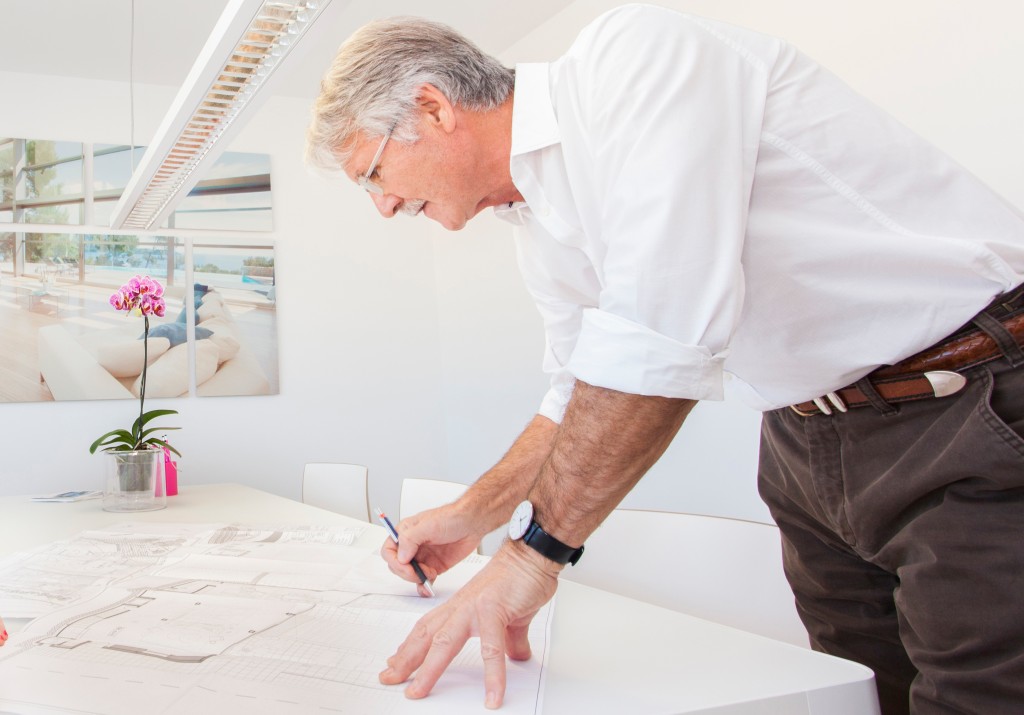
His Story
More than a profession, architecture is a way of living for Miguel Arenas (Barcelona, 1945). He has been practising for more than forty years and has hundreds of projects to his credit, yet each new challenge continues to inspire him like the first.
An architect by vocation, as a child he was fascinated by watching his father, a tailor, tracing suit patterns on paper. He soon decided that he also wanted to “design” – not jackets or trousers, but architectural work.
He knew he had made the right decision when he applied to ETSAB, the Barcelona School of Architecture, and found himself at the drawing board with an entire world to create.
In 1970 he received his degree and moved to Palma de Mallorca, where he planned to start a new life, exchanging the ashen skies of Barcelona for the light and seascape of the Balearic Islands.
A follower of functionalism and the modernist movement, the first projects to go through his studio were single-family homes which exhibited the influence of such celebrated architects as José Antonio Coderch and Frank Lloyd Wright.
In addition to his work in Mallorca, he soon expanded his professional sphere to include Ibiza, where he designed the Transat Building in collaboration with architect Xavier Flaquer.
The majority of his work has been focused on designing exclusive homes and restoring rural properties for both Spanish and foreign clients in Mallorca and Ibiza. Some of his work has been published in magazines such as Arquitectura y Diseño, ARQ and LivingDECO.
Numerous hotels, tourist resorts and office buildings have likewise been designed by his studio, as well as a shopping centre, the annexes to the Sant Joan de Déu Hospital and the Red Cross, and the new Endesa headquarters/work centre in the Balearic capital.
Today, Miguel Arenas is more involved than ever in his profession. He continues to derive enormous pleasure from each blueprint that becomes reality, and tackles each new project as a challenge to be built from the ground up. For Miguel, no two sites and no two clients are alike, which is why he looks for the most fitting inspiration for addressing the needs, concerns and aspirations of the end user. He puts himself in the client’s shoes, encouraging them to participate in the evolution of the project.
